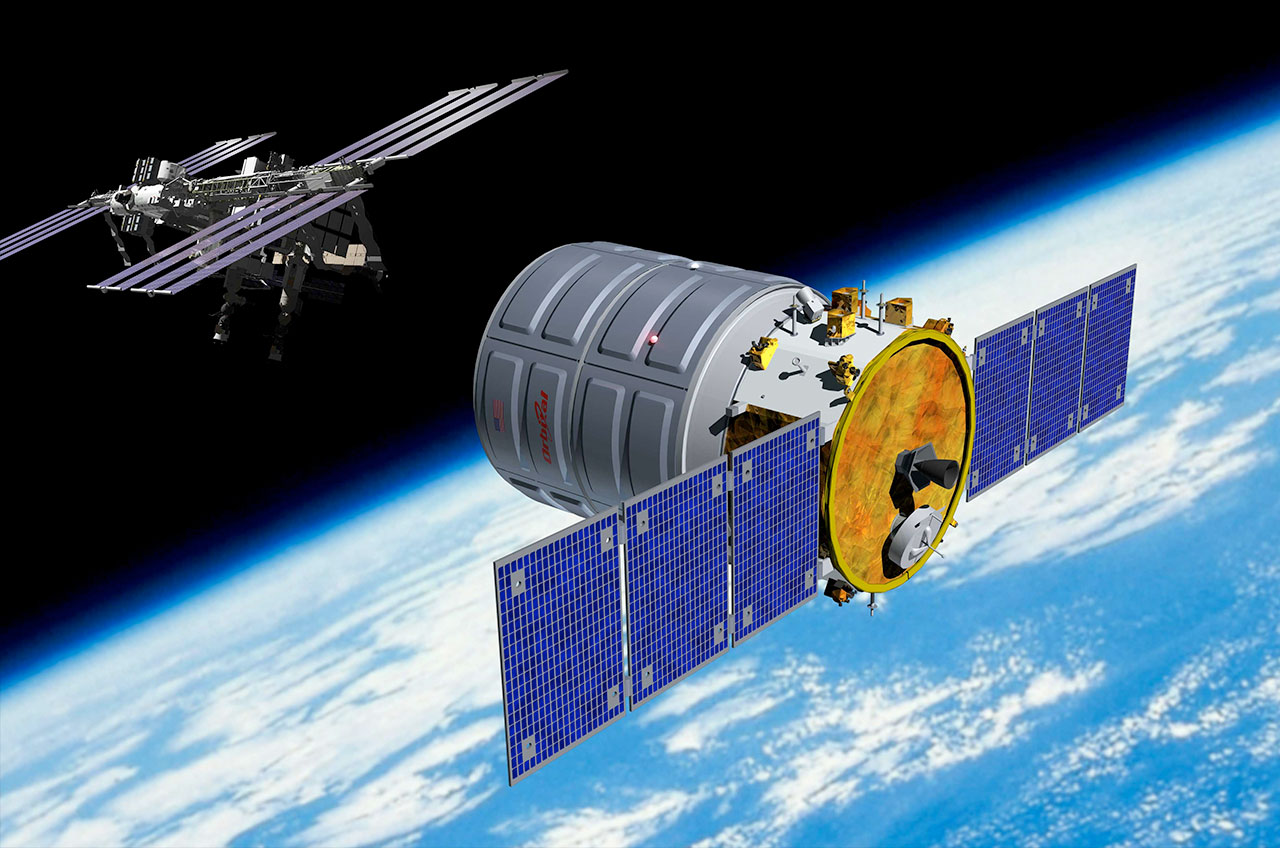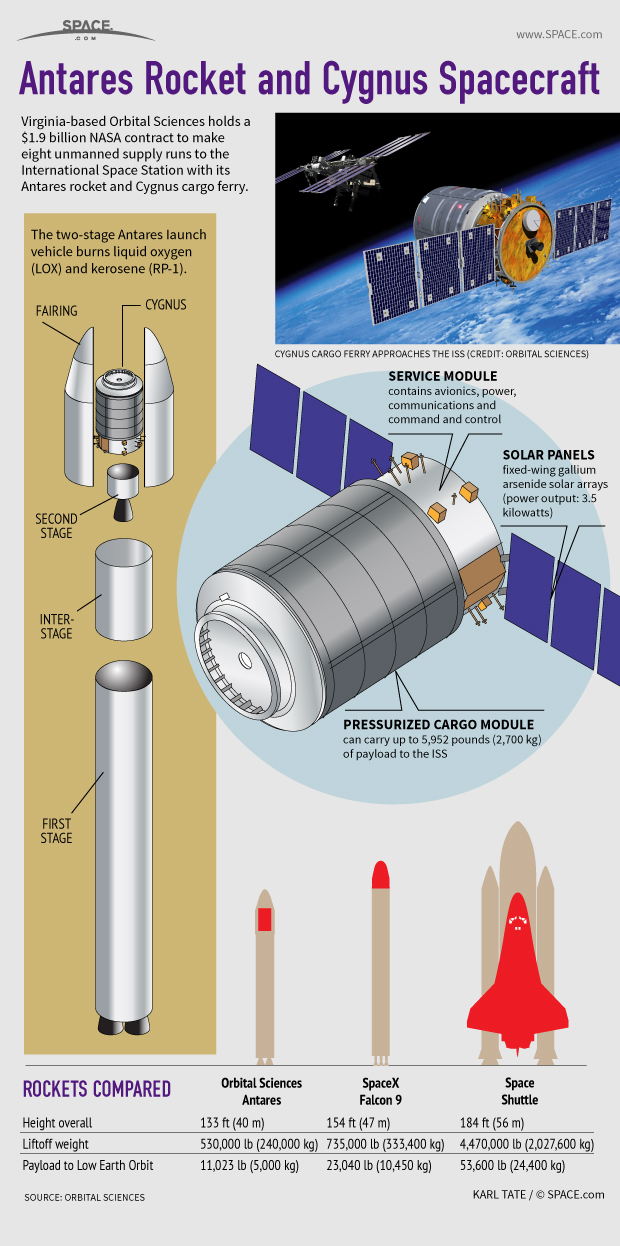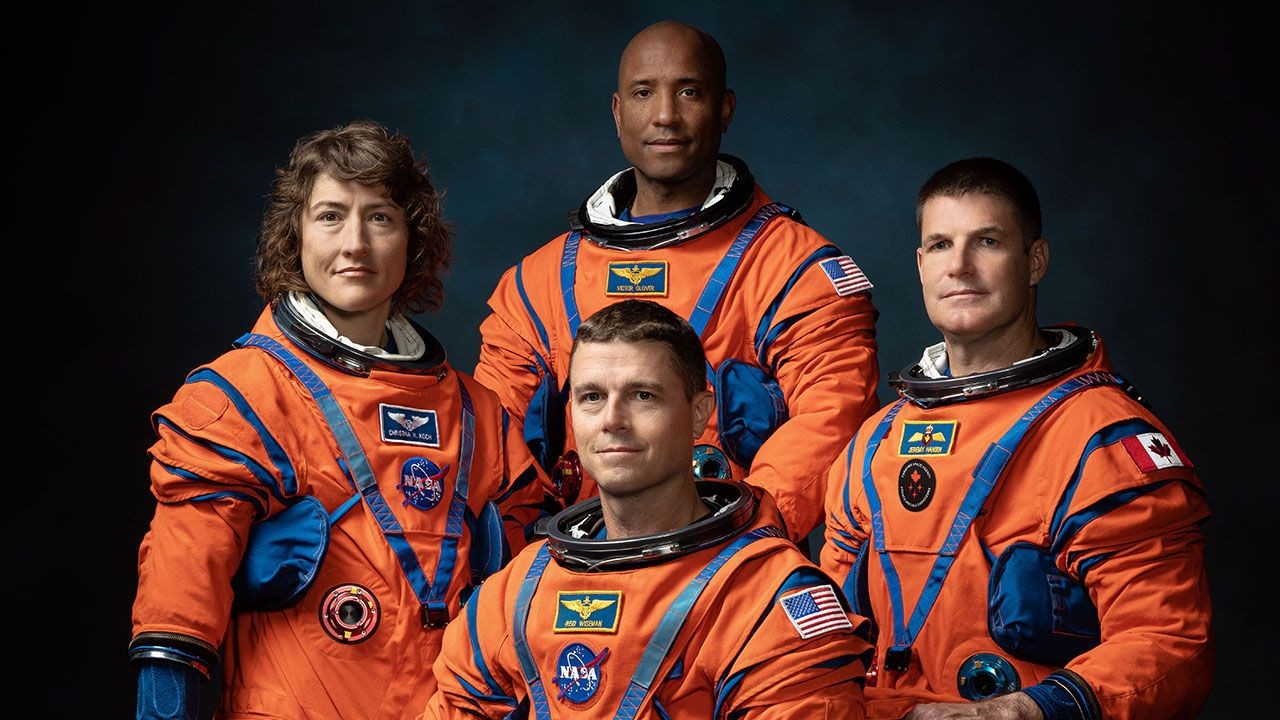
Editor's update: Orbital Sciences has aborted the Cygnus spacecraft's first attempt to link up with the International Space Station. Full Story here: Private Cygnus Cargo Ship Aborts First Space Station Approach
A commercial cargo vessel is steadily closing in on the International Space Station, setting the stage for a historic rendezvous with the orbiting lab Sunday morning (Sept. 22).
The unmanned Cygnus spacecraft, built by Virginia-based company Orbital Sciences, is expected to be grappled by astronauts using the space station's 57-foot-long (17.4 meters) robotic arm at 7:25 a.m. EDT (1125 GMT) Sunday. If all goes according to plan, the cargo ship will be secured to its docking port beginning at 9:15 a.m. EDT, NASA officials said.
You can watch the Cygnus spacecraft's space station arrival on SPACE.com here, courtesy of NASA TV. Coverage begins at 4:30 a.m. EDT (0830 GMT) Sunday. [See amazing launch photos of Orbital's Cygnus spacecraft]

The rendezvous will mark a big moment for Orbital Sciences, which launched Cygnus for the first time Wednesday (Sept. 18) on a critical demonstration flight to the space station. The current mission is designed to show that Cygnus and its Antares rocket, also built by Orbital, are ready to begin hauling cargo to the orbiting lab. (The company holds a $1.9 billion deal with NASA to make eight robotic supply runs.)
Breaking space news, the latest updates on rocket launches, skywatching events and more!
NASA officials described Wednesday's launch as "picture perfect," and the chase phase is apparently going smoothly as well.
"All systems on the Cygnus spacecraft continue to operate very well, and the mission is proceeding just as planned," Orbital Sciences officials wrote in a status update Friday (Sept. 20).
Cygnus has some work to do before arriving at the station, however, and it's not all about closing the distance gap. The spacecraft must also perform 10 maneuvers to prove that it can safely sidle up to the orbiting lab. As of Friday, Cygnus had completed two of those moves, with the other eight planned for early Sunday morning.
"Once the final demonstration maneuver is deemed successful, NASA will give approval for the approach to within 10 meters of the station, where Cygnus will be grappled by the robotic arm and guided to its berthing port," Orbital officials wrote.
Cygnus won't be the first private shapeship to dock with the orbiting lab. The unmanned Dragon capsule, built by California-based firm SpaceX, has visited the station three times — first on a demonstration flight in May 2012, and then on contracted cargo runs in October 2012 and March 2013.
SpaceX, which is led by billionaire entrepreneur Elon Musk, holds a $1.6 billion NASA deal to make at least 12 such flights.
The 17-foot-long (5 m) Cygnus spacecraft is capable of carrying about 4,400 pounds (2,000 kilograms) of cargo in its current configuration, but it's toting only 1,540 pounds (700 kg) on this mission. Cygnus will stay docked to the station for about 30 days, at which point it will depart and burn up in Earth's atmosphere over the Pacific Ocean. (SpaceX's Dragon capsules, by contrast, have heat shields and can thus bring cargo back down to Earth.)
SPACE.com is providing complete coverage of Orbital's first Cygnus test flight to the International Space Station. Visit SPACE.com for updates on the mission. SPACE.com partner Spaceflight Now is also offering updates via its Cygnus Mission Status Center.
Follow Mike Wall on Twitter @michaeldwall and Google+. Follow us @Spacedotcom, Facebook or Google+. Originally published on SPACE.com.
Join our Space Forums to keep talking space on the latest missions, night sky and more! And if you have a news tip, correction or comment, let us know at: community@space.com.

Michael Wall is a Senior Space Writer with Space.com and joined the team in 2010. He primarily covers exoplanets, spaceflight and military space, but has been known to dabble in the space art beat. His book about the search for alien life, "Out There," was published on Nov. 13, 2018. Before becoming a science writer, Michael worked as a herpetologist and wildlife biologist. He has a Ph.D. in evolutionary biology from the University of Sydney, Australia, a bachelor's degree from the University of Arizona, and a graduate certificate in science writing from the University of California, Santa Cruz. To find out what his latest project is, you can follow Michael on Twitter.
